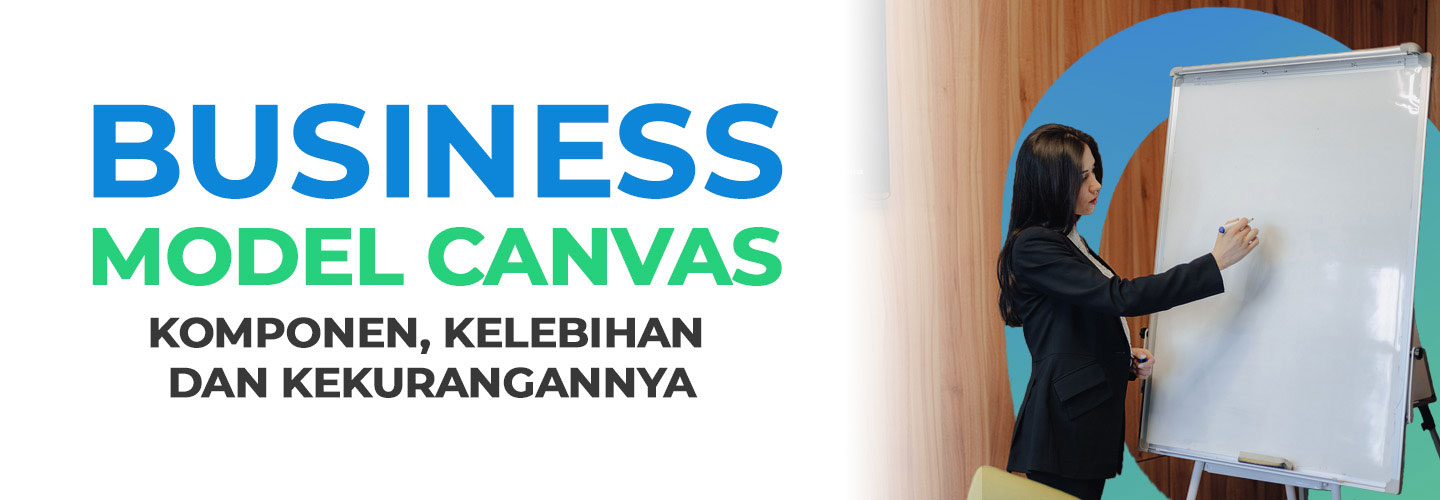Definition of Business Model Canvas, Goals, Advantages and Disadvantages

One way that can help entrepreneurs and business people in designing the right business strategy is the Business Model Canvas (BMC).
This method has become popular among business people because of its ease in visualizing the overall business model.
Let's discuss more about what the Business Model Canvas is as well as its goals, components, and advantages and disadvantages!
Definition of Business Model Canvas
The Business Model Canvas (BMC) is a visual framework used to help understand and plan a business.
This framework is like a map that shows the various important parts of a business. For example, what is sold, who the product is sold to, how to sell it, and how much it costs.
With BMC, all information about the business can be arranged on one page so that it is easy to understand and analyze.
BMC was created by Alexander Osterwalder and Yves Pigneur in 2005 and is now widely used for business planning.
Purpose of Business Model Canvas
The main purpose of using the Business Model Canvas is to help companies understand, evaluate, and develop their business models.
BMC enables business teams to:
- Visualize business ideas quickly and effectively.
- Identify critical elements in a business model.
- Align various aspects of the business.
- Communicate business strategies more easily.
- Analyze the strengths and weaknesses of a business model.
- Design innovations and improvements in the business model.
By using BMC, you can quickly map out business strategies and make better decisions.
Business Model Canvas Components
The Business Model Canvas consists of nine essential components. Each of these components is like a puzzle piece that together form a complete picture of how a business works.
Quoting from Strategic Management Insight, the nine components are:
Customer Segments
To make it easier to understand, imagine you have an ice cream shop. Who do you think will buy your ice cream?
The chances of buying your ice cream are between children, teenagers, or even adults who like sweet foods.
They are called customer segments, namely groups of people who might be interested in what you sell.
Remember, it’s important to know your customers well so you can create products that they love.
Value Propositions
Value propositions are the main reasons why customers choose your product or service over others.
What makes your ice cream different from other ice cream shops?
Is it because it uses natural ingredients or maybe it has a unique flavor that other ice cream shops don’t have?
Value propositions are the reasons why people choose to buy from you over others.
Channels
Channels are how you communicate and reach your customers.
How do people hear about your ice cream? Do you sell it in stores?
Or maybe you deliver it to people’s homes? Or promote it through social media?
All of these methods are called channels.
Customer Relationships
Customer relationships are how you interact with your customers.
For example, you want to be friendly and approachable to your customers. Or maybe you prefer a more formal and professional approach.
Revenue Streams
Revenue streams are the ways your business generates income.
In the case of an ice cream shop, you might make money from selling ice cream.
However, you might also sell merchandise like t-shirts or hats with the ice cream shop logo on them. All of the ways you make money from your business are included in revenue streams.
Key Resources
Key resources are the essential assets needed to run your business. What do you need to run your business?
For an ice cream shop, you might need an ice cream maker, ingredients like milk, sugar, and of course, people to make and sell the ice cream.
Key Activities
Key activities are the primary activities that must be done to run your business model. Simply put, they are the things you must do every day to run your business.
For an ice cream shop, your primary activities might include making ice cream, serving customers, and keeping your store clean and inviting.
Key activities are the essential tasks you must do to keep your business running smoothly.
Key Partnerships
The next component is key partnerships, which are important partners who help your business run.
Who do you think helps you run your business?
For an ice cream shop, your key partners might include your milk and fruit suppliers, or maybe the company that provides the ice cream containers.
Key partners are people or other businesses that help your business run smoothly.
Cost Structure
Cost structure is the costs incurred in running a business. Calculate what you have to pay to run the business.
For an ice cream shop, you might have to pay rent, buy ingredients, pay employee salaries, and pay electricity bills.
Advantages of Business Model Canvas
The Business Model Canvas has several advantages that make it popular among business people:
Encourages Team Collaboration
Everyone can contribute to designing the business. With BMC, ideas from different people can be combined, so that they can create better solutions.
Helps in Testing Ideas
With BMC, you can quickly try out business ideas to see if they are good before launching them to the market.
Focus on Customers
BMC helps you always remember to consider what your customers want and need.
Provides Clarity
BMC provides an easy-to-see overview of all the important parts of your business on one page.
Flexible and Easily Updated
Because of its visual and concise nature, the BMC is easy to update when there are changes in strategy or the business environment.
Disadvantages of the Business Model Canvas
Despite its many advantages, the Business Model Canvas also has some limitations that you need to consider:
Lack of Mission Statement
The BMC does not have a section to define the company's mission statement, which is essential for understanding the goals and objectives of the business.
Limited to Financial Aspects
The BMC only shows the cost structure and revenue streams, but does not explain in depth how we make money.
Less Intuitive Order
The order of the blocks in the BMC can be difficult to understand, especially for beginners.
This less intuitive arrangement can cause confusion when first using it.
Lack of External Context
The BMC does not take into account external factors such as competition and other industry factors that can affect the success of the business model.
Does Not Describe Interconnections
The BMC does not show how the various elements are connected and influence each other.
Despite its limitations, the Business Model Canvas remains a very useful tool in designing and analyzing business models.
To deepen your understanding of business development, we invite you to take the Business Development Planning class from prasmul-eli. This class will provide the insights and skills needed to design an effective and sustainable strategy for your business.

